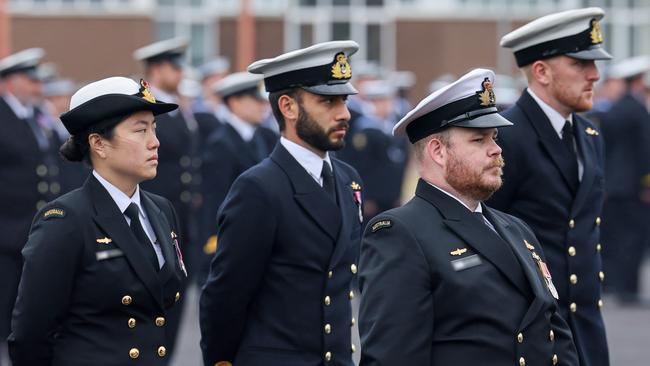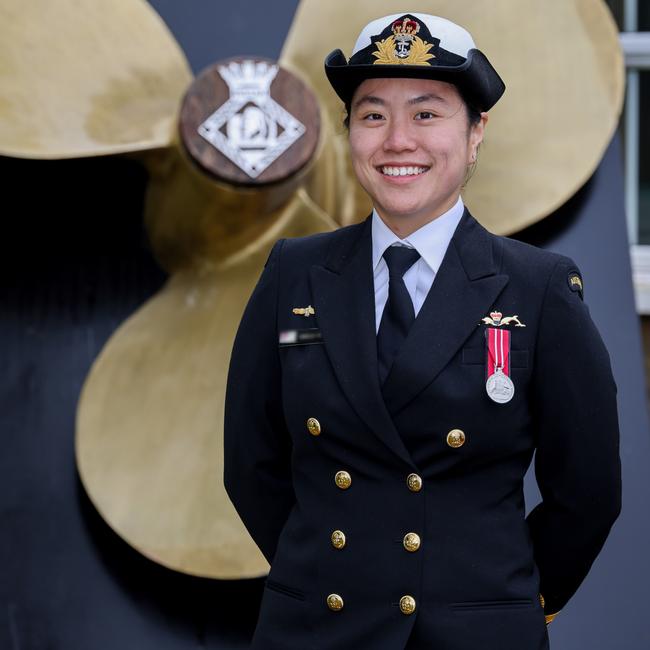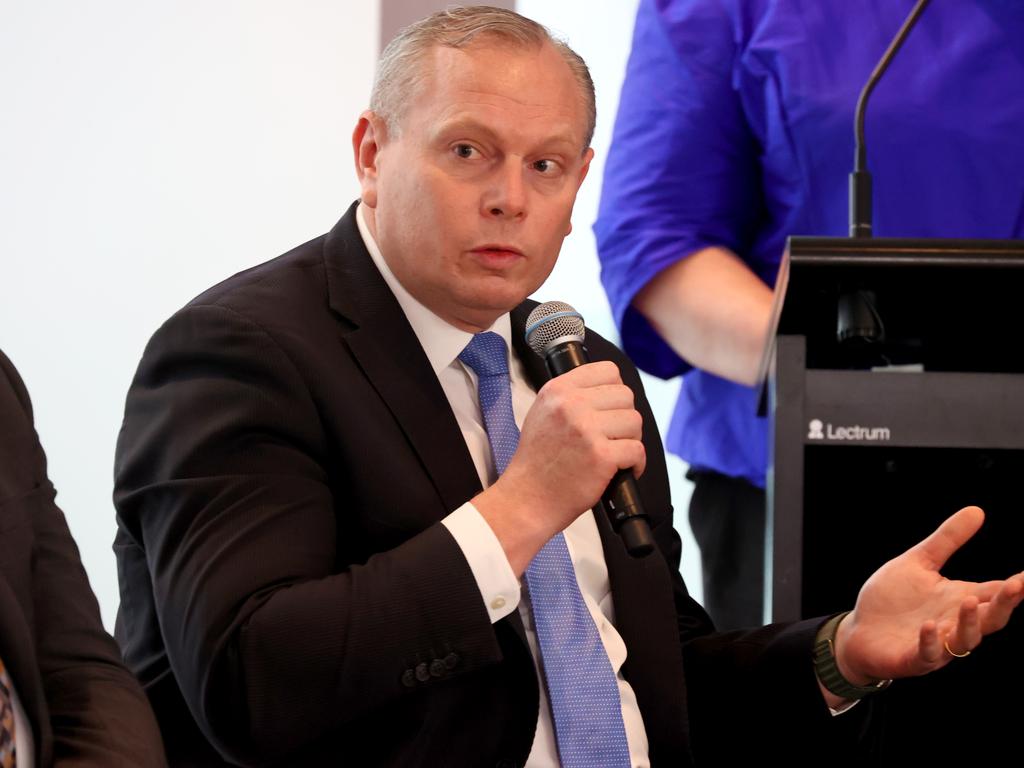Female Royal Australian Navy engineer from Sydney is dux of nuclear training course in Britain in first AUKUS deployment
Sydney woman Lieutenant Isabella is dux of the Royal Navy’s nuclear submarine training in the first AUKUS secondments to Britain.

Sydney submariner Lieutenant Isabella is the first woman from the Royal Australian Navy to graduate under the billion dollar AUKUS program and has been seconded to the newest “hunter killer” British Astute class submarine.
Lieut. Isabella – no last names allowed for security purposes – is an engineer previously attached to a Collins class sub but has spent the past 18 months completing Royal Navy training courses including seven months in nuclear reactors at Gosport.
She emerged as dux of the Nuclear Reactor course, and was the only woman of 17, and one of three Australians to finish the challenging studies.
Lt-Cdr James, 33, was second behind Lieut. Isabella and will now join the HMS Agamemnon, which is nearing completion in Barrow-in-Furness, Cumbria and will begin sea trials soon. The other Australian, weapons engineer Lieut. Steve finished in the top five, ensuring a lofty standard for other Australians beginning the annual intake to live up to.

Eventually many hundreds of Australian submariners will be similarly trained in preparation for the delivery of the AUKUS submarines in the 2040s.
On Tuesday Lieut. Isabella was appointed to her new boat, the HMS Anson at Faslane in Scotland where she will be part of the marine engineering department and with another ongoing qualification, will become a manoeuvring supervisor to run the watch and look after the sub’s reactor plant.
“So there is responsibility,’’ she told The Australian, adding “I am excited to be back on a boat, operating a plan to get a boat through maintenance. It’s definitely very different from being on a Collins boat, but I love it.” She noted, however, she was still adjusting to Scottish accents, and the rest of the crew, who have been highly welcoming, have laughed with her about getting lost on the 97m-long boat.
HMS Anson is the fifth and most advanced hunter-killer submarine which has completed intensive tests including in the north of Scotland and the Atlantic for the past 17 months and is preparing for operational deployment.
Lieut. Steve, 29 was a former weapons engineer, but noted that nuclear technology was “a completely different ballpark” and “much more interesting than conventional engineering”.
The Royal Navy said the Astute-class nuclear-powered submarines are the largest and most advanced attack submarines ever operated by the navy, capable of launching long-range Tomahawk missiles to accurately hit land targets and lethal Spearfish torpedoes to defeat enemy submarines.
The submarines are also capable of circumnavigating the globe while submerged, producing their own oxygen and drinking water on lengthy deployments.
Lieut. Isabella, 27, said her recent training involved study in the understanding of how a nuclear reactors works.
“So, we did a lot of maths, atomic and nuclear physics, reactor physics, chemistry, metallurgy, radiation protection, radiation safety,’’ she said.
“All that that gives us an understanding of what happens in a reactor and how to operate that safely. And then the other courses built around that were all the systems courses, to understand all primary and secondary systems that we are actually operating. That included simulated training to draw on all the stuff we’d learnt in both the academics and the actual systems courses.”
Growing up in Sydney, Leiut Isabella wasn’t aware Australia’s navy had submarines until she went to university.
“I always thought, honestly, ships are just really cool. And then I’ve always been interested in STEM and engineering, so I did a year of naval architecture at uni before I joined up (with the RAN), and I knew I made the right choice. Ships are really awesome so why not join the Navy? You know, I don’t want to be bogged down in an office job my entire career. I wanted to go and do something, not be stuck in academics forever. And then when I joined up, I met a female submariner and I thought that sounds even cooler, getting to go underwater and get to do all these really exciting and cool operations that you don’t really hear about normally.”
Vice-Adml Mark Hammond, the chief of the Royal Australian Navy, praised the “exceptional dedication” of the trailblazing trio of officers for their success – and the Royal Navy for the “world-class training” it has provided.
At the graduation he said: “I am incredibly proud of all three of our remarkable officers for their achievements and especially acknowledge Lieut. Isabella who was awarded Dux of the graduating class.
“This demonstrates the exceptional skillset and knowledge of our people undertaking this unique training from the Royal Navy – a longstanding partner and friend to the Royal Australian Navy.
“The graduation marks another significant step forward for the Royal Australian Navy’s ability to operate, maintain and support Australia’s future nuclear-powered submarine capability.”
Meanwhile three Royal Australian Navy officers have been seconded to the US Virginia class submarines. Thirty mechanical fitters and electricians as well as electrical, mechanical and safety engineers and submarine maintenance and battery crew from South Australia and Western Australia are currently learning the maintenance of nuclear powered submarines training in Pearl Harbour, Hawaii.








To join the conversation, please log in. Don't have an account? Register
Join the conversation, you are commenting as Logout